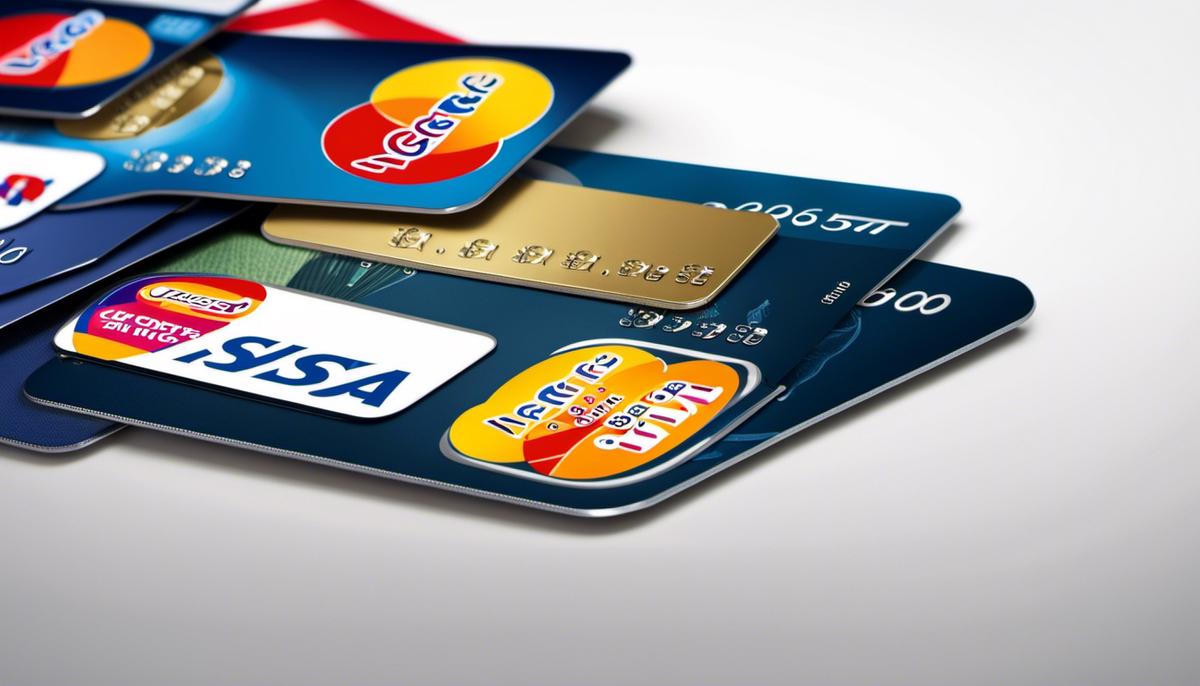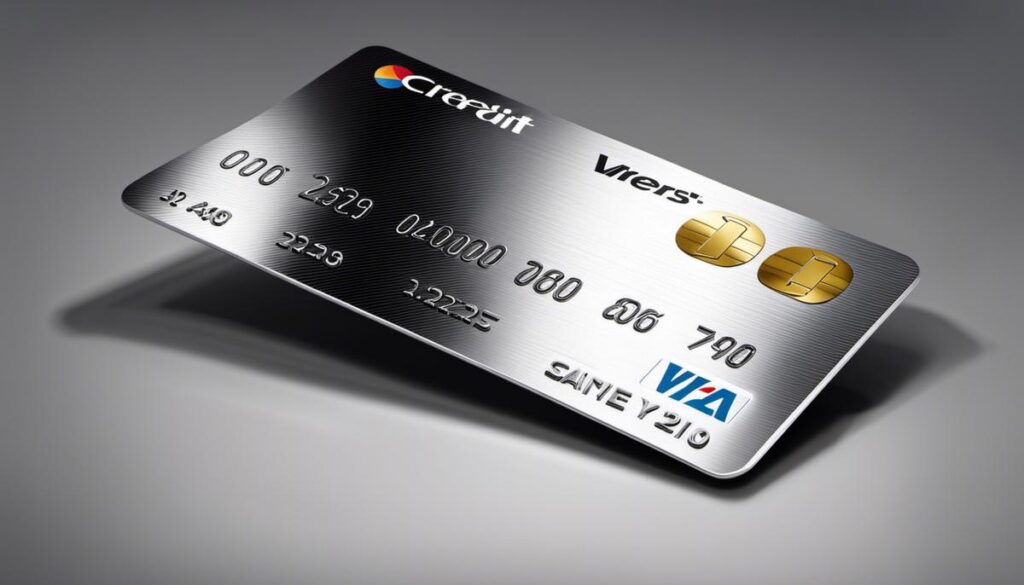Credit cards, which are a ubiquitous part of modern life, can either be a convenient financial tool or a slippery slope to debt, depending upon how efficiently they are utilized. No-interest credit cards, in particular, have emerged as a powerful tool that, if properly used, can create a significant difference in one’s financial landscape.
Grasping the mechanics of no-interest credit cards, understanding their potential benefits and risks, and learning to scrutinize various offerings effectively are all vital components to making savvy financial decisions.
Furthermore, employing strategically sound tactics can allow you to maximize the advantages of these cards. This discourse will delve into these distinct facets, ensuring you are thoroughly equipped to explore the world of no-interest credit cards.
Table of Contents
ToggleUnderstanding No Interest Credit Cards
Understanding No Interest Credit Cards
No-interest credit cards, commonly referred to as 0% APR cards, are credit cards that offer a promotional period during which you pay no interest on your purchases or balance transfers. Essentially, they give you a grace period to pay off debt without incurring additional costs in interest. The duration of these promotional periods varies but typically falls between 12 and 21 months.
Who Offers No-Interest Credit Cards
Many card issuers offer no-interest or low-interest promotional periods to entice new customers, including major banks such as Chase, Bank of America, and Capital One. Additionally, some store-branded credit cards also feature no-interest introductory periods, especially for big-ticket items. It is always crucial to carefully read the terms and conditions of these offers to fully understand the parameters of the zero-interest timeframe.
Terms and Conditions
While no-interest credit cards may seem overwhelmingly advantageous, it’s essential to understand the terms and conditions that come with them. Firstly, the no-interest offer usually only applies to purchases and balance transfers made within a certain period after account opening. Additionally, many cards require a minimum payment each month, failure to which might result in interest being charged on the remaining balance. Finally, once the promotional period ends, any remaining balance will be subject to the card’s regular APR, which can sometimes be quite high.
Understanding Promotional Periods
When you open a no-interest credit card, maintain an understanding of when the promotional period begins and when it will end. In most cases, the clock starts ticking immediately upon account opening. It is also important to note that late or missed payments could potentially result in the termination of your promotional period, leading to immediate application of the standard interest rate.
After the Promotional Period
One important aspect to remember is that the no-interest feature is temporary. After the promotional period ends, interest charges will apply to any remaining balance. The APR could be anywhere from lower double digits to near 30%, depending on your creditworthiness. It’s critical to know what the regular interest rate will be before you apply for a card, so you can create a plan to pay off your balance before this rate takes effect.
Wrapping Up
To recap, no-interest credit cards can serve as a valuable resource for individuals looking to manage and pay down their debt, especially if they’re used thoughtfully during their promotional periods. Nonetheless, it’s crucial to get a clear picture of the associated terms and conditions of these cards to prevent encountering unanticipated fees or high-interest rates once the promotional period is over.

Benefits of No-Interest Credit Cards
Understanding the Promise and Potential of No-Interest Credit Cards
No-interest credit cards, also referred to as zero-percent APR cards, offer a temporary grace period wherein no interest is charged on purchases or balance transfers, making them a unique and desirable aid in personal finance. When used astutely, these cards present pivotal benefits for saving on interest payments and managing debt effectively.
One of the primary virtues of no-interest credit cards is the potential they provide for considerable savings in interest expenses. For most credit cards, interest begins accruing the moment a purchase takes place. With no-interest credit cards, consumers have the chance to make hefty purchases and repay the balance, either in full or portions, during the card’s introductory period without incurring any interest. Hence, they are perfect for costlier purchases like home appliances or electronics, helping users significantly reduce interest expenses.
Not only useful for making purchases, no-interest credit cards also serve as an advantageous instrument for balance transfers, thus contributing another method for money-saving. If a cardholder is burdened by high-interest credit card debt, they can transfer the balance to a no-interest card.
During the introductory period, typically 6-18 months long, the cardholder can strive to pay off the balance without sustaining any new interest charges, allowing quicker debt repayment as payments made are set against the principal, bypassing interest accumulation.
Furthermore, when used wisely, no-interest credit cards can be an effectual tool for debt consolidation. Instead of dealing with multiple credit card bills, consumers can consolidate their payments by transferring all their balances to a no-interest card. This can simplify the repayment process as well as positively impact credit utilization, a key determinant in credit score calculations.
However, while the benefits of no-interest credit cards are clear, cardholders must also comprehend the strings attached. The introductory grace period is temporary, and after its conclusion, a higher APR will be enforced. Cardholders aiming for maximum savings must strive to pay off the balance within the promotional timeframe.
Moreover, it’s important to understand that despite the potential for saving significantly, no-interest credit cards can also lead to a debt trap if not managed correctly. Since the interest rates could increase sharply after the promotional period ends, it’s prudent to use these cards for significant one-time purchases or to consolidate existing high-interest debts, rather than for recurring expenses. High balances and late payments could carry penalties and potentially affect credit scores negatively.
Overall, no-interest credit cards can be powerful tools, but their benefits are primarily enjoyed by consumers who manage them wisely, keeping a vigilant eye on payment schedules, and understanding fully the terms and conditions they come with.

Downsides & Pitfalls of No-Interest Credit Cards
Crossing the Bridge: High-Interest Rates After Promotional Periods
A key challenge with no-interest credit cards lies in the high-interest rates that can be applied abruptly after the card’s promotional period concludes. While the promotional period—which typically lasts 12 to 21 months—allows cardholders to make purchases or perform balance transfers without accruing any interest, the subsequent phase can often spring unpleasant surprises.
If, on the completion of the promotional period, the cardholder hasn’t fully paid off their debt, the remaining balance will attract high-interest rates, typically higher than those on regular credit cards. As a result, the consumer might end up paying more in interest than what they had previously envisaged.
Risk of Increased Debt
Most people are attracted to the offering of no interest as a useful tool in managing or reducing existing debt. However, the lack of a deterrent such as accruing interest can tempt some cardholders to spend beyond their means, thus accumulating larger debt over time. While a no-interest card can help avoid interest costs in the short term, it does not magically eliminate debt or contribute to reducing one’s overall financial liabilities, particularly if the outstanding balance is not paid off entirely before the promotional period ends.
Late Fees and Penalties
Like all credit cards, no-interest cards are not exempt from late fees and penalties, which can add up quickly and unexpectedly, becoming a significant financial burden. If the cardholder misses a payment or makes it late, the card issuer generally applies a late payment fee, which is typically around $25 for the first offense and can increase to $35 for subsequent ones within a six-month period.
Moreover, a missed or late payment can also lead to a penalty annual percentage rate (APR). Penalty APRs are noticeably significantly higher than regular APRs and can apply not only to new charges but also to your existing balance.
Demystifying Complex Terms and Conditions
Parsing through complex credit card terms and conditions is no small task, but it is incredibly valuable when considering no-interest credit cards. Different rates may apply to different types of transactions, like purchases, balance transfers, and cash advances, with the no-interest rate not necessarily being universal.
Some no-interest credit cards even operate on a deferred interest system. If you fail to clear your balance within the promotional period, you will be charged retroactively for all interest accumulated during that time.
Thus, thoroughly understanding the terms and conditions tied to no-interest credit cards is vitally important. This includes how and when interest starts accruing, and which transactions the promotional rate applies to. Avoiding unexpected bills and financial strain is often a simple matter of being informed. Remember, a no-interest card doesn’t equate to limitless spending, but should be used strategically, always within the ability to repay before the promotional period ends.

Comparing No-Interest Credit Card Offers
An Overview of No-Interest Credit Card Offers
At their core, no-interest credit cards offer a straightforward benefit – a predetermined period, typically spanning from six to 18 months, during which no interest is charged on your purchases or balance transfers. This can be advantageous for financing large purchases or reducing existing credit card debt without adding extra interest to your total balance.
Factors to Consider When Comparing No-interest Credit Cards
When comparing no-interest credit card offers, the first thing to note is the length of the introductory period. Some cards may offer long promotional periods, even up to 21 months, while others might have a shorter time span. This detail is significant because once the no-interest period ends, a higher, standard interest rate will apply to any remaining balance. Therefore, it’s essential to go through the fine print and understand the stipulated period’s terms and conditions.
Similarly, knowing the post-promotional interest rate is another crucial factor. This rate, also referred to as the Annual Percentage Rate (APR), kicks in after the promotional period ends. It’s important to find out what this rate will be, as it can sometimes be very high and add substantially to your debt if you haven’t paid off the balance in full.
Another factor to consider when comparing no-interest credit card offers is the card’s fee structure. For instance, annual fees, balance transfer fees, and foreign transaction fees can add to your overall card costs and even outweigh the benefit of the no-interest period if they are too high.
Considering Rewards and Perks
Lastly, it’s worth comparing the rewards and perks provided by different no-interest credit cards. Such benefits can range from cashback rewards, points systems, travel perks, and sign-up bonuses, which can be considerably beneficial if used wisely. However, don’t let these perks distract you from the more important details like the length of the no-interest period, the post-promotional interest rate, and the card’s fee structure.
Responsible Use of No-Interest Credit Cards
While a no-interest credit card can be a valuable financial tool, it’s crucial to use it responsibly. Try to pay off the balance before the promotional period ends to avoid hefty interest charges. Always make at least the minimum monthly payments on time to avoid penalty fees and potential damage to your credit score.
When it comes to examining no-interest credit card offers, it’s crucial not to get ensnared solely by the allure of the no-interest duration. Instead, pay close attention to every individual facet such as the length of the no-interest period, the subsequent promotional interest rate, the pricing structure, and any other potential benefits or rewards that the card might provide. Evaluating these factors will aid you in selecting the credit card that is most apt for your financial circumstances.

Effective Strategies for Using No-Interest Credit Cards
Delving Deeper into No-Interest Credit Cards
No-interest credit cards, or as they are otherwise known, 0% APR (annual percentage rate) cards, designate credit cards equipped with an introductory span during which purchases or balance transfers attract no interest charges.
This interest-free phase generally ranges from 12 to 21 months, although the exact term is contingent on the conditions specified by the credit card issuer. These cards serve as a convenient option for handling significant expenses or consolidating balances from other cards without accumulating further interest throughout this promotional period.
Strategic Budgeting
The key to maximizing the benefits of no-interest credit cards is effective budgeting. This involves planning your spending and understanding the credit card’s terms to prevent interest charges. Divide the total cost of what you aim to purchase or transfer to the card by the number of months in the promotion. Aim to pay this amount each month to pay off the balance before the promotional period ends.
Regular Payments & Avoiding Debt
Avoiding debt accumulation is essential when using a no-interest credit card. Despite the lack of interest, you’re still required to make minimal payments monthly. Ignoring these payments can attract late payment fees and might lead to the cancelation of the promotional offer. The aim should be to diligently make regular payments, more than the minimum requirement if possible, and keep your credit utilization low.
Timely Payment Importance
Timeliness of payments also significantly impacts the effectiveness of a no-interest credit card strategy. Late payments can cause the card issuer to revoke the promotional APR and leave you stuck with a high-interest rate, potentially making your debt grow more quickly than you can pay it down. Setting up automatic payments is a good way to ensure you don’t accidentally miss a payment.
Avoid New Purchases Towards End of Promotional Period
Finally, to make the most of your no-interest credit card, it’s recommended to avoid new purchases, especially toward the end of your promotional period. Additional purchases could lead to carrying a balance after the promotional period ends, causing new debt to accrue at the regular, typically much higher, APR.
Understanding the Fine Print
It’s also critical to remember that card issuers differ in how they apply for payments during the promotional period. Some apply your payments to the balance with the highest interest rate, while others may apply them to your balance transfer.
Understanding these details can help strategically manage your debt and avoid surprises that might arise due to any misunderstanding of your card’s terms and conditions. Adequate knowledge of your card’s conditions, coupled with strategic spending and with regular and timely payments, will help you effectively use a no-interest credit card.

Knowledge is the sharpest weapon in the battle against financial uncertainty and debt. By understanding how no-interest credit cards operate, the advantages they offer, the potential drawbacks they harbor, and how to compare different offerings, you set yourself up for informed financial decision-making.
Armed with the right strategies on how to use these cards, you can navigate the intricate labyrinth of debt and interest. No-interest credit cards can be a beneficial tool when used wisely. So, do your due diligence, stay aware of the terms, conditions, and pitfalls, and make regular, timely payments, all while enjoying the promises of zero-interest purchases and potentially life-changing financial freedoms.
FAQ
Is there any credit card without interest?
Certainly, there are credit cards available that offer an introductory period with no interest, commonly referred to as “0% APR” (Annual Percentage Rate) cards. These cards provide a specific timeframe during which you won’t be charged any interest on the balances you carry. This period can range from several months to over a year, depending on the credit card issuer and the terms they offer.
During this introductory period, you can make purchases and carry balances without incurring any interest charges, as long as you make at least the minimum required payments each month. It’s important to note that once the introductory period ends, any remaining balances will start accruing interest at the regular APR, which tends to be higher.
It’s also important to read the terms and conditions of these cards carefully, as there might be specific requirements or limitations. Some cards may have annual fees or other charges associated with them. Additionally, eligibility for these cards may depend on your creditworthiness.
To provide you with more specific and up-to-date information, I recommend checking with various credit card issuers and comparing the offers they have available. Always read the fine print and understand the terms before applying for any credit card. If you’re looking for sources to back up this information, you can refer to financial websites such as NerdWallet, Credit Karma, or the official websites of reputable credit card issuers.
What is the best credit card with no interest?
When it comes to identifying the single “best” credit card with no interest, it’s important to remember that the term “best” is subjective and can vary based on individual financial needs and preferences.
However, I can mention a few credit cards that were popular for offering 0% APR introductory periods, as of my last update in September 2021. Keep in mind that these details might have changed, and I recommend verifying with up-to-date sources before making any decisions. Here are a couple of well-known options:
Chase Freedom Unlimited:
Introductory Offer: Typically offers a 0% APR on purchases and balance transfers for a certain number of months.
Cash Back: Earn cash back on every purchase, and sometimes there are bonus cashback offers.
No Annual Fee: This card is often known for not having an annual fee.
Citi Simplicity Card:
Introductory Offer: Offers a 0% APR on purchases and balance transfers for a specific duration.
No Late Fees or Penalty Rates: One of the notable features is the absence of late fees or penalty interest rates.
No Annual Fee: This card usually comes with no annual fee.
Citi Simplicity Card:
Introductory Offer: Offers a 0% APR on purchases and balance transfers for a specific duration.
No Late Fees or Penalty Rates: One of the notable features is the absence of late fees or penalty interest rates.
No Annual Fee: This card usually comes with no annual fee.
Discover it Cash Back:
Introductory Offer: Offers a 0% APR on purchases and balance transfers for a certain number of months.
Cash Back: Earn cash back on rotating categories and a percentage on all other purchases.
First Year Cash Back Match: Discover often matches the cash back earned in the first year.
How to get a 0% interest rate on credit card?
Achieving a 0% interest rate on a credit card involves a few key steps. Keep in mind that these steps should be followed carefully to ensure you understand the terms and conditions of the card. Here’s a detailed guide:
Research and Compare Offers:
Start by researching credit card offers from various financial institutions. Look for cards that explicitly advertise an introductory 0% APR period. Compare the duration of the interest-free period, annual fees, rewards programs, and other features that align with your needs.
Check Eligibility: Each credit card has specific eligibility criteria, including credit score requirements. To qualify for a 0% APR credit card, you generally need a good to excellent credit score. Check your credit score before applying, and if needed, take steps to improve it.
Apply for the Card: Once you’ve identified a suitable 0% APR credit card, complete the application process. This typically involves providing your personal information, and financial details, and agreeing to a credit check.
Understand the Introductory Period: If approved, you’ll receive the credit card along with information about the duration of the 0% APR introductory period. This period can vary from a few months to over a year. Make sure you know the exact start and end dates of this period.
Make On-Time Payments: During the 0% APR period, it’s crucial to make at least the minimum required payment on time each month. Late payments might result in the termination of the introductory rate, and you might be charged penalties.
Pay Off Balances: Take advantage of the interest-free period to pay down your credit card balance as much as possible. This will help you avoid interest charges once the introductory period ends.
Avoid New Purchases if Possible: While your main focus should be on paying off your existing balance, if you can, try to avoid making new purchases on the card during the introductory period. This will ensure that your payments go directly towards reducing the existing balance.
Monitor Expiry Date: Keep track of the end date of the 0% APR period. Once this period ends, any remaining balance will start accruing interest at the regular rate. Make sure you’re prepared for this change and continue making payments on time.
Consider CompensationTransfers: If you have balances on higher-interest credit cards, you might also consider transferring these balances to the 0% APR card during the introductory period. Some cards allow balance transfers with low or no fees.
Read the Fine Print: Carefully review the terms and conditions of the credit card to ensure you understand all fees, policies, and potential changes that could affect your account.
How can I get 0% APR on an existing credit card?
Getting a 0% APR on an existing credit card typically involves balance transfer offers. Here’s a step-by-step guide on how to go about it:
Check Your Current Card’s Terms:
Review the terms and conditions of your existing credit card to understand if it offers balance transfer options and any associated fees. Take note of your current APR and any fees for transferring a balance.
Research Balance Transfer Offers:
Look for credit card offers from different issuers that provide a 0% APR on balance transfers. These offers usually come with an introductory period during which you won’t be charged interest on the transferred balance.
Compare Terms and Fees:
Compare the terms of the balance transfer offers, including the duration of the 0% APR period, any balance transfer fees, and the regular APR that will apply after the introductory period.
Apply for the New Card:
Once you’ve found a balance transfer offer that suits your needs, apply for the new credit card. During the application process, you’ll usually have the option to request a balance transfer from your existing card to the new one.
Transfer the Balance: If approved, the new credit card issuer will facilitate the transfer of the balance from your existing card to the new card. They may provide instructions on how to initiate the transfer, which can often be done through their online platform or customer service.
Monitor the Process: Keep an eye on both your existing and new credit card accounts to ensure that the balance transfer is completed as intended. It may take a few days for the transfer to be processed.
Make Payments On Time: During the 0% APR introductory period, make sure to make at least the minimum required payments on time. Failure to do so might result in losing the 0% APR offer and incurring penalties.
Pay Off the Balance: Use the interest-free period to pay down your transferred balance as much as possible. This will help you make the most of the offer and avoid interest charges in the future.
Understand Regular APR: Be aware of the regular APR that will apply after the 0% APR introductory period ends. This will help you plan for your finances once the promotional period is over.
Review Terms and Conditions: Carefully read the terms and conditions of both your existing and new credit cards to ensure you understand all fees, policies, and potential changes.











